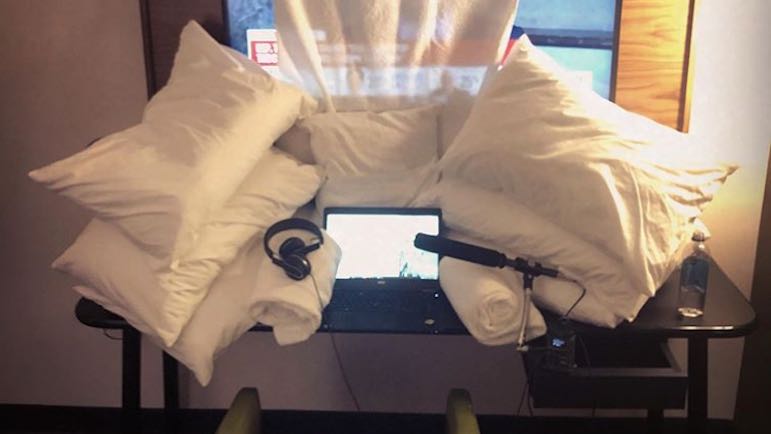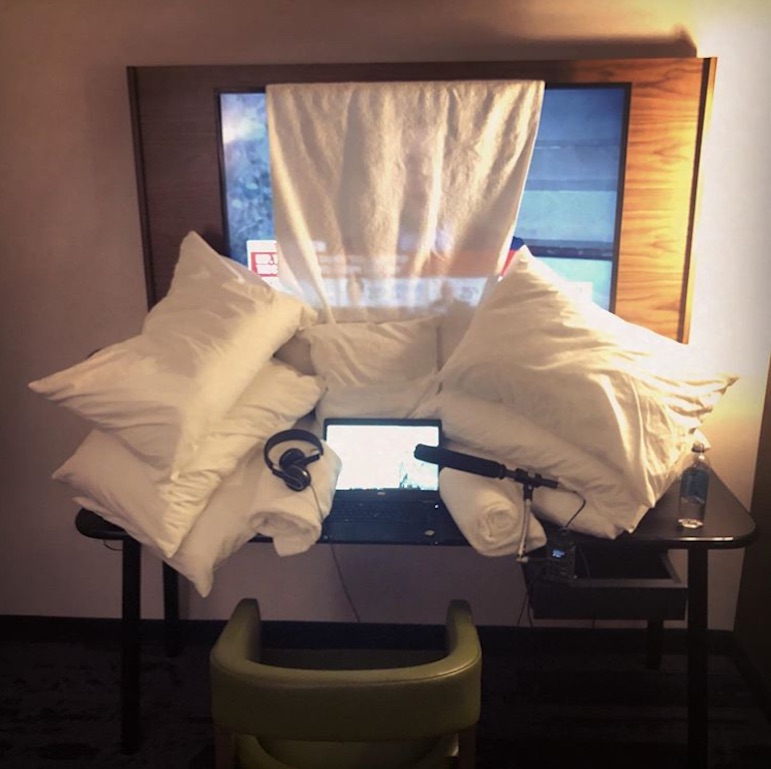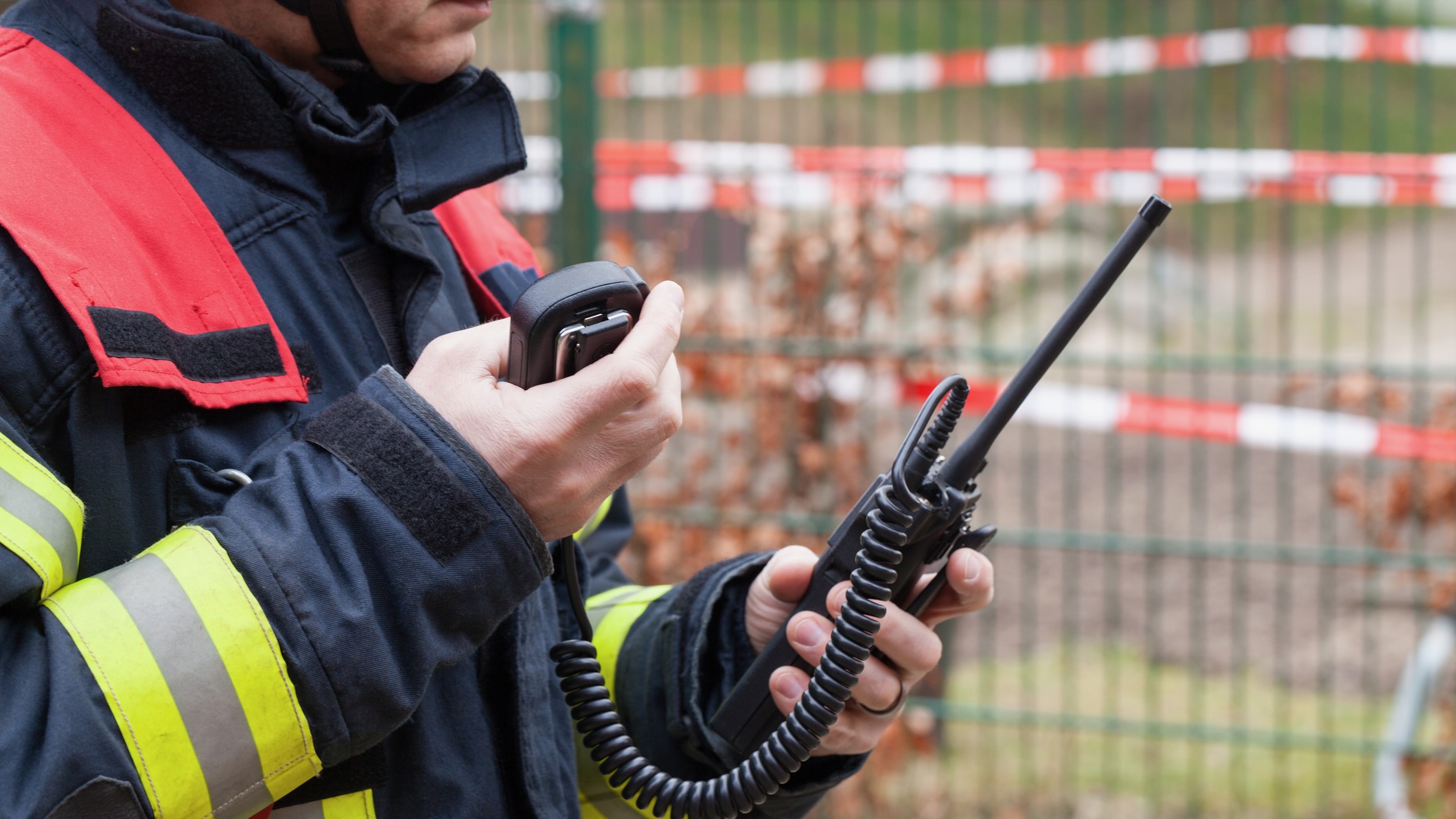Building the perfect home studio with NPR’s Don Gonyea

Many public media journalists are working from home, covering the coronavirus from dining room tables and recording audio in makeshift pillow forts.
Don Gonyea, NPR’s roving national political correspondent, has a lot of experience recording high-quality audio outside of a studio. He often records his features and spots from hotel rooms across the country while he follows political hopefuls.
“It really was necessity,” Don Gonyea said of his early pillow-fort–building days. “I noticed early on that I could control the acoustics of my environment no matter where I was, and that if I could figure out quick solutions no matter where I was, I could really improve the quality of what I put on the air.”
We thought Gonyea’s expertise building temporary studios with everyday items like couch cushions and pillows may come in handy for those of you at home who could use some guidance. Here are his top tips:
The place
When choosing the spot for your perfect home studio, Gonyea says to find a space as far away from the natural sounds outside. If you can, choose a room away from the noisy street. For him, that’s his basement. A room with carpet is preferable, and curtains come in handy as well.
Then, he says, do a sound check. Is the heating vent on? Is the fridge humming?
“I almost never walk into a room without doing a little mental check of its acoustics,” Gonyea says with a laugh. “And that’s sometimes if I just go to somebody’s house!”
Choosing a room with good acoustics to begin with will make it so you don’t have to build a very elaborate studio setup at all, says NPR investigations reporter Howard Berkes. Berkes worked from home for NPR for 40 years.
“If a room is available, especially a room with a door, carpeting is the first critical step to absorbing sound,” Berkes says. “A high ceiling, if available, helps with sound dissipation. I have a 9′ ceiling. Another NPR home office reporter has 7′ ceilings and reports great results.”
Both Berkes and Gonyea caution against one space many reporters (including myself) have turned to during the pandemic: the closet.
“I’m not a fan of closets,” Gonyea says. “Because they’re too small, and they’re too uncomfortable. If you’ve got a big walk-in closet, it’s okay. But a closet can be too closed in, and a closed-in room can just sound too dead. It’s like it’s the opposite of echoey. If it’s too dead, you don’t sound natural.”
Plus being crunched up in your closet does not lend itself to proper breath control, he adds.
The materials
Once you’ve chosen the ideal room for your home studio, it’s time to gather some helpful materials.
“If you ask for extra feather pillows, you sound like a prima donna,” Gonyea says. “Except that they are more stackable. Pillows are great!”
Gonyea says to grab some couch cushions, curtains, comforters or blankets. If you have foam lying around, like from an old mattress topper, that can be useful.
Even bubble wrap can come in handy, Gonyea says.
The structure
Gonyea says he usually builds his microphone a “little bunker” on top of a desk.

“Wherever I am, I will use nine or 10 pillows and just build a little three-sided pillow fort,” he says. “Stack them up. Three high on each side, three high in the back, and there’s an open space on the desk that might be two feet by two feet, which gives you plenty of room to put your laptop. It gives your microphone space and space to breathe/ You have air above the pillow fort so it’s not all closed in and too dead.”
Then he’ll scatter blankets or cushions a few feet away to soften echos.
If you don’t have access to that many pillows, he says you can construct a similar C-shaped structure with blankets, cushions or even a piece of furniture.
“Mine is just the couch with various pieces of electronic equipment, notebooks and empty Diet Coke cans strewn about,” says NPR business reporter Jim Zarroli.
We asked you to submit your at home setup, and here are some of our favorites:
Happy building!






